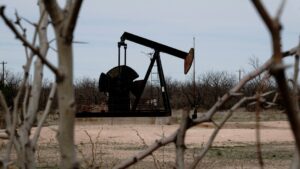West Virginia Court Strictly Construes Policy Requirements To Identify all Lost Personal Property
The federal district court found that West Virgina required policyholders suffering a loss of personal property to list all such property before recovering under the policy. Idleman v. State Farm Fire & Cas. Co., 2023 U.S. LEXIS 123815 (N.D. W. Va. July 18, 2023).
The plaintiffs purchased a second home and, over time, furnished and supplied the residence. On November 29, 2021, the residence and its contents were destroyed in a fire.
Plaintiffs were insured under a homeowner's policy issued by State Farm. The policy had separate coverage limits for Dwelling Protection (Coverage A), Personal Property Protection (Coverage B), Other Structures Coverage, Loss of Use Coverage, etc. The plaintiffs immediately informed State Farm of the fire. State Farm assigned a claims specialist, Thomas Renee, to investigate the claim.
Reneau inspected the property and declared it to be a total loss. He instructed the plaintiffs to inventory every item of personal property loss in the fire using State Farm's Contents Collaboration portal. The plaintiffs did not complete the inventory, however, because they were overwhelmed by their loss and believed the requirement to be unfair.
At the conclusion of the investigation, State Farm paid policy limits for Dwelling Protection (Coverage A) and other coverages totalling $215,094.25. State Farm did not pay the policy limit of $128,100 for Personal Property Protection (Coverage B). Instead, it held the claim open and notified the plaintiffs on several occasions that their claim was pending completion of their personal property inventory.
In June 2022, based on the partial inventory plaintiffs created, State Farm offered to pay $5,634 as the current documented Personal Property claims submitted by the plaintiffs. State Farm informed plaintiffs that the payment was not a final settlement, but simply an Actual Cash Value payment of the contents claim thus far. Reneau also followed up with the plaintiffs and offered to assist them with the inventory on several occasions. The plaintiffs refused State Farm's partial payment and dis not submit a complete personal property inventory.
In July 2022, the plaintiffs commenced this action alleging that State Farm breached the policy by refusing to pay the full limits of their personal property coverage, $128,100. State Farm filed a motion for partial summary judgment to resolve whether West Virginia's valued policy law applied to personal property claims. State Farm argued the answer was no and plaintiffs were not entitled to the full limits of their personal property coverage as a matter of law even though they suffered a total loss. To recover for a loss, plaintiffs had to demonstrate the value of their lost contents through a personal property inventory.
The plaintiffs cross-moved for summary judgment and argued they could not possibly list every item lost in the fire and should not be penalized for their inability to do so. Plaintiffs argued State Farm was required to pay their personal property claim because they substantially complied with their duties under the policy and because a formal proof of loss was not required where the fire was a total loss and they provided access to the site for inspection.
The court sided with State Farm. West Virginia's valued policy law provided that, in the event of a total loss fire, an insurer had to pay the full amount of the insurance on real property. However, the West Virginia Supreme Court had held that the statute did not extend to personal property claims.
Further, the policy was unambiguous in requiring State Farm to pay for personal property loss caused by fire. But the policy required insureds to first provide an inventory demonstrating the actual value of their lost personal property so that State Farm could adequately assess the claim.
The plaintiffs further contended that State Farm set and required the level of insurance on the plaintiffs' contents. The policy, however, stated, "It is up to you to choose the coverages and limits that meet your needs. We recommend that you purchase a coverage limit at least equal to the estimated replacement cost of your home."
Therefore, the plaintiff were not entitled to recover the full value of their personal property coverage as a matter of law.


